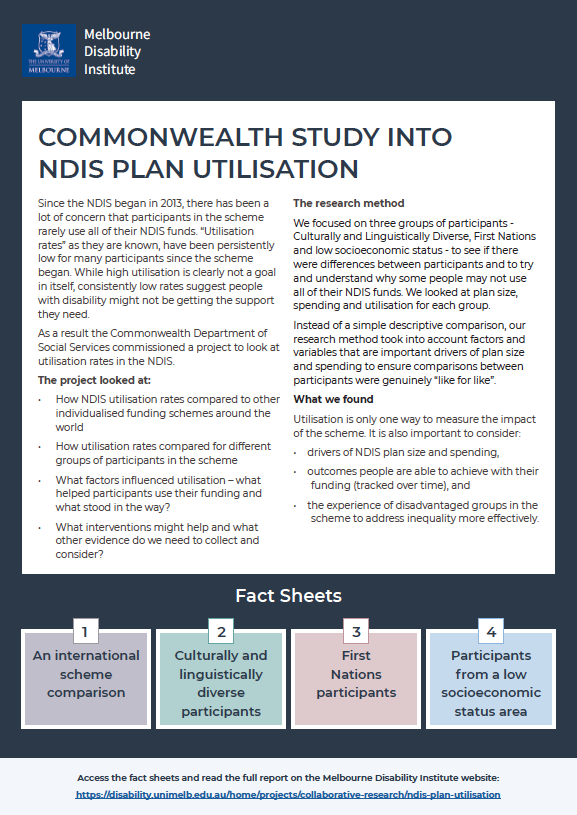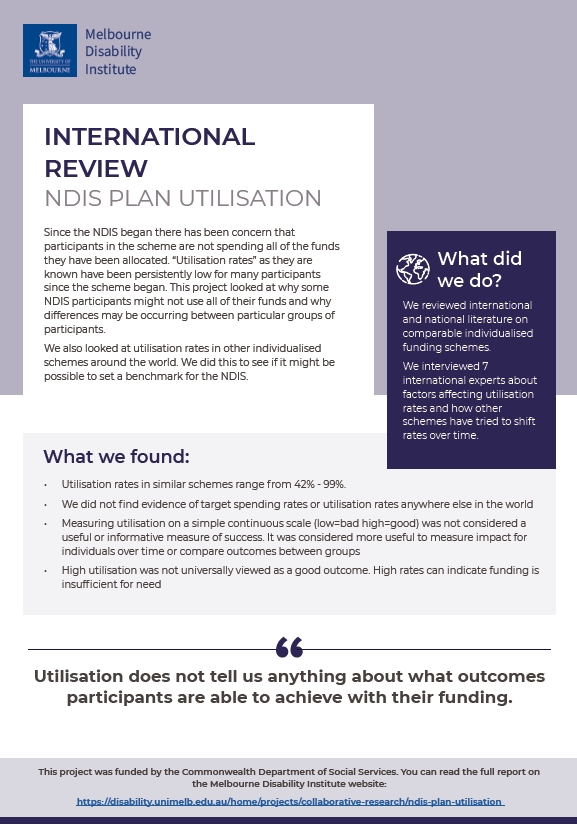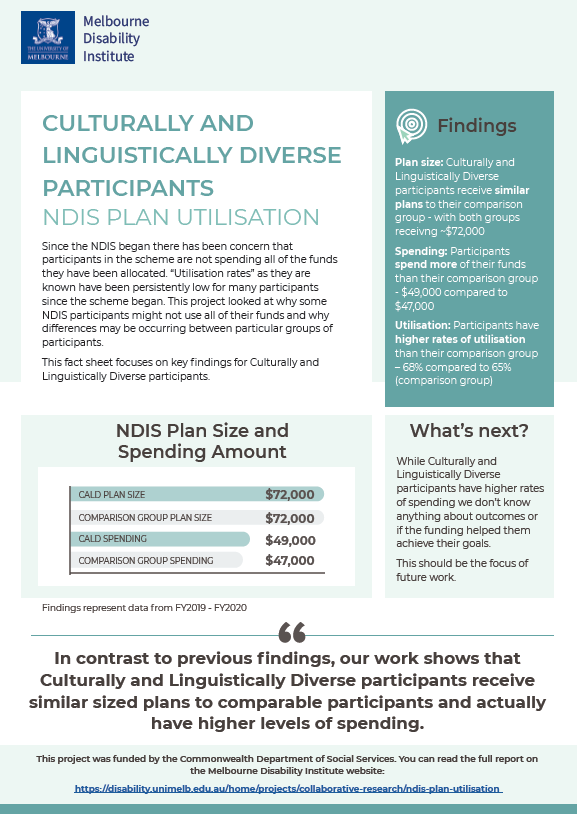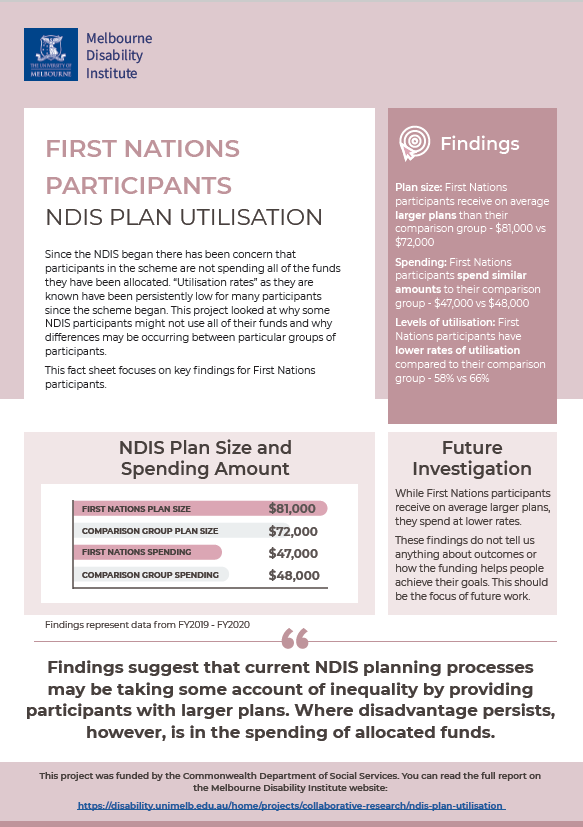NDIS Plan Utilisation
What is this research about?
Since the NDIS began in 2013, there has been a lot of concern that participants in the scheme rarely use all their NDIS funds. “Utilisation rates” as they are known, have been persistently low for many participants since the scheme began. While high utilisation is clearly not a goal in itself, consistently low rates suggest people with disability might not be getting the support they need.
As a result, the Commonwealth Department of Social Services commissioned researchers from the University of Melbourne to conduct a project to look at utilisation rates in the NDIS.
The project looked at:
- How NDIS utilisation rates compared to other individualised funding schemes around the world
- How utilisation rates compared for different groups of participants in the scheme
- What factors influenced utilisation – what helped participants use their funding and what stood in the way?
- What interventions might help and what other evidence do we need to collect and consider?
The research method
This quantitative research carried out for this project focused on three groups - Culturally and Linguistically Diverse and First Nations participants as well as participants from low socioeconomic areas. We wanted to see if there were differences between participants, and to try and understand why some people may not use all their NDIS funds. We looked at plan size, spending and utilisation for each group.
Instead of a simple descriptive comparison, our research method considered factors and variables that are important drivers of plan size and spending to ensure comparisons between participants were genuinely “like for like”.
The international comparison involved reviewing literature on individualised funding schemes around the world. We also interviewed seven international experts about factors which affected utilisation and how other schemes have sought to change rates over time.
What we found:
Utilisation is only one way to measure the impact of the scheme. It is also important to consider:
- drivers of NDIS plan size and spending,
- outcomes people can achieve with their funding – particularly if we track these over time
- the experience of disadvantaged groups in the scheme to address inequality more effectively.
Research
Fact sheets – summaries of key findings (coming soon)
- Overview
- An comparison of schemes across the world
- Culturally and Linguistically Diverse Participants - summary of key findings
- First Nations Participants – summary of key findings
- Participants from a low socioeconomic area – summary of key findings
 |  |  |  |  |
|---|---|---|---|---|
| Project Overview | International Comparison | Culturally and Linguistically Diverse Participants | First Nations Participants | Participants from a low socioeconomic status area |
Full Reports
- NDIS Plan Utilisation Synthesis Report – this report provides a short summary of all the research carried out for the project.
- NDIS Utilisation Project – full report of qualitative findings
- NDIS Utilisation Project - full report of quantitative findings
- NDIS Utilisation Project – comparison of individualised funding schemes around the world
Research team
Authors
- Dr George Disney, Project Lead
- Yi Yang, Research Fellow
- Peter Summers, Research Assistant
- Dr Adyya Gupta, Research Fellow
- Dr Sean Byars, Research Fellow
- Professor Bruce Bonyhady Co-Principal Investigator
- Professor Anne Kavanagh, Co-Principal Investigator
- Kirsten Deane (synthesis report)
This study was funded by the Commonwealth Department of Social Services.